


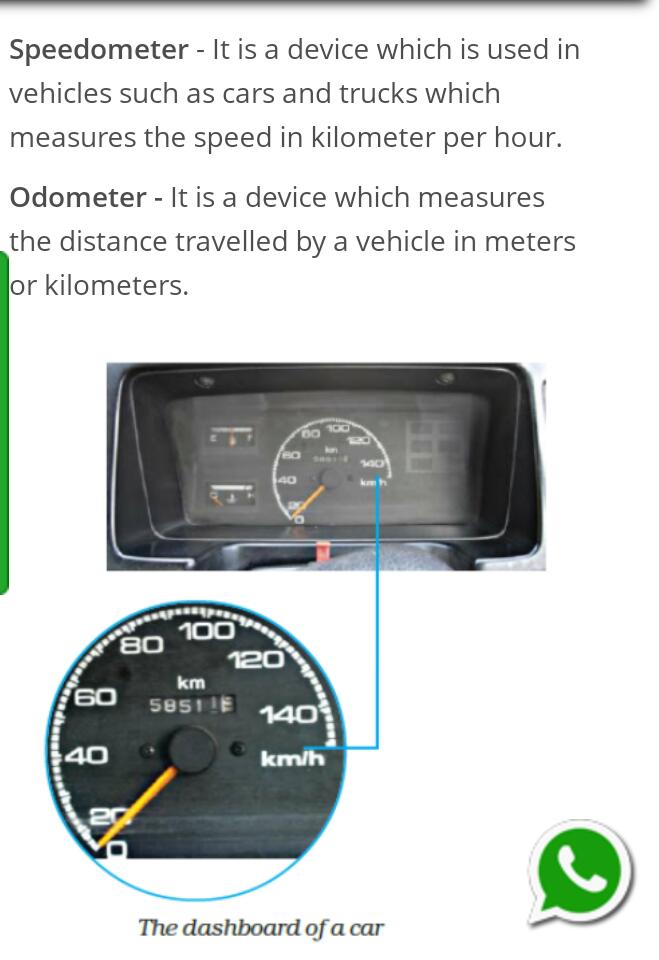

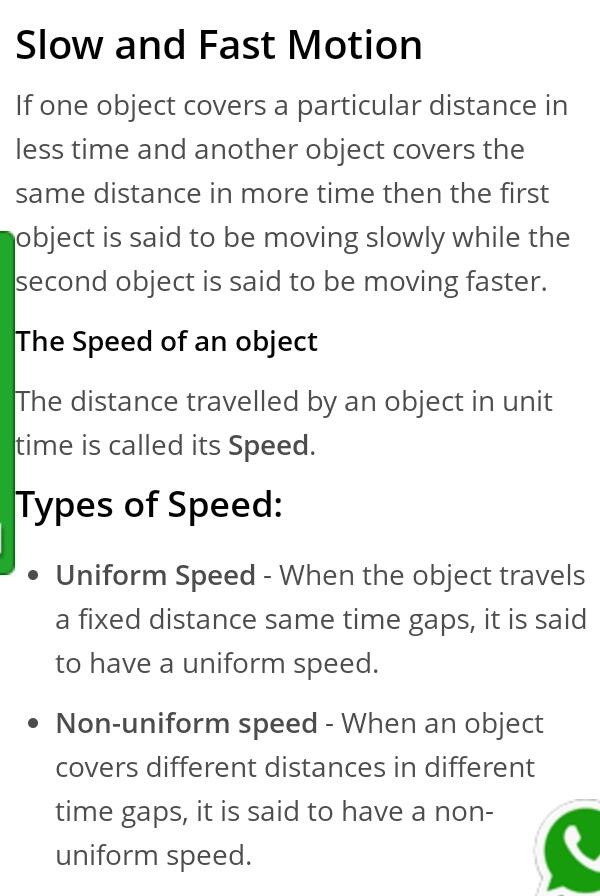

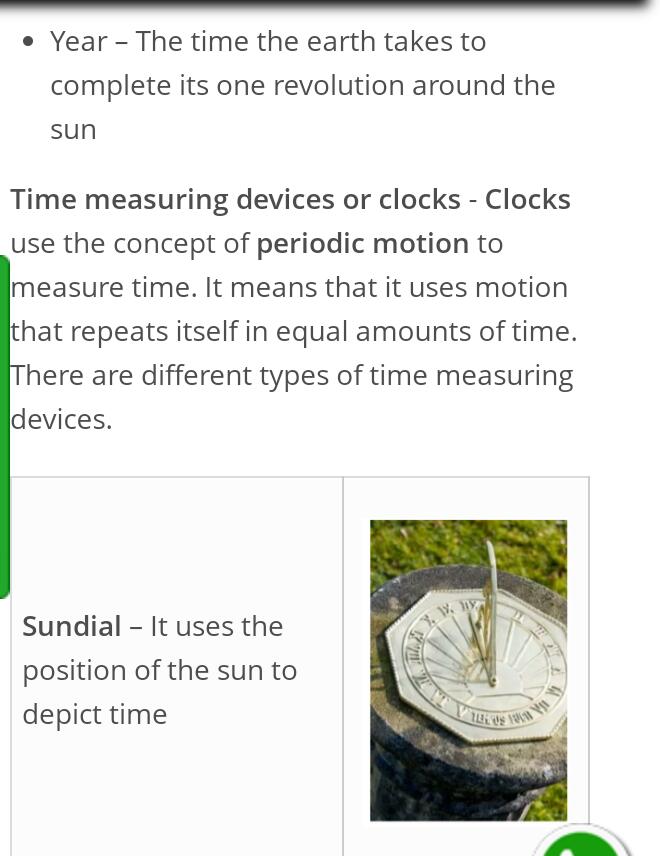

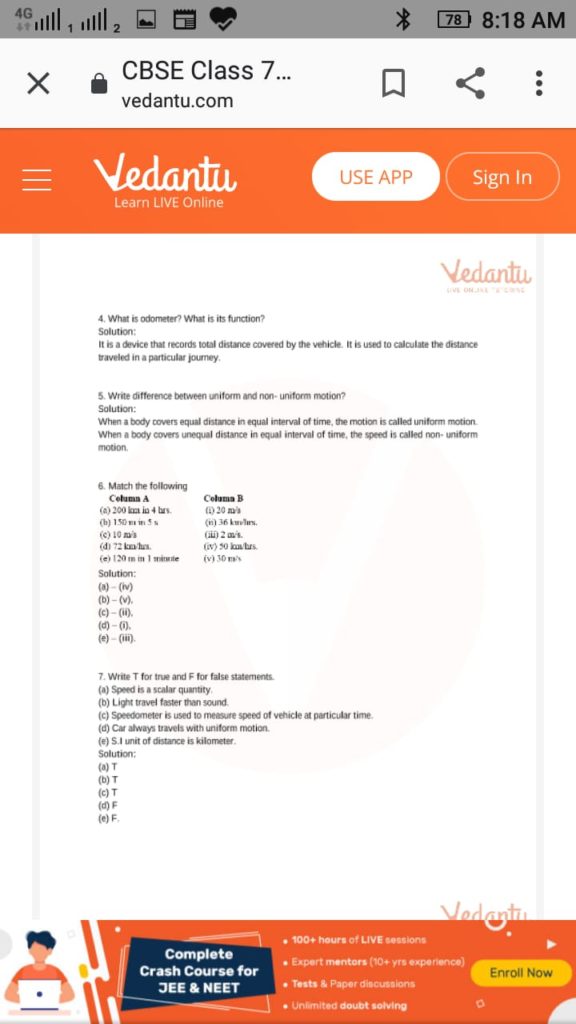
Class 7: General knowledge:-
Third assignment:-
1.Find out the national birds and animals of the following countries:
(a)Indonesia
(b) Cambodia
(c) Israel
(d) Australia
(e)France
(f) Thailand
(g)China
(h) India
(i) South Africa
(j) Germany


Fourth assignment:-
1.Define photosynthesis.
2.Explain the mechanism of photosynthesis.
3.Draw a neat labelled diagram of an enlarged stoma.
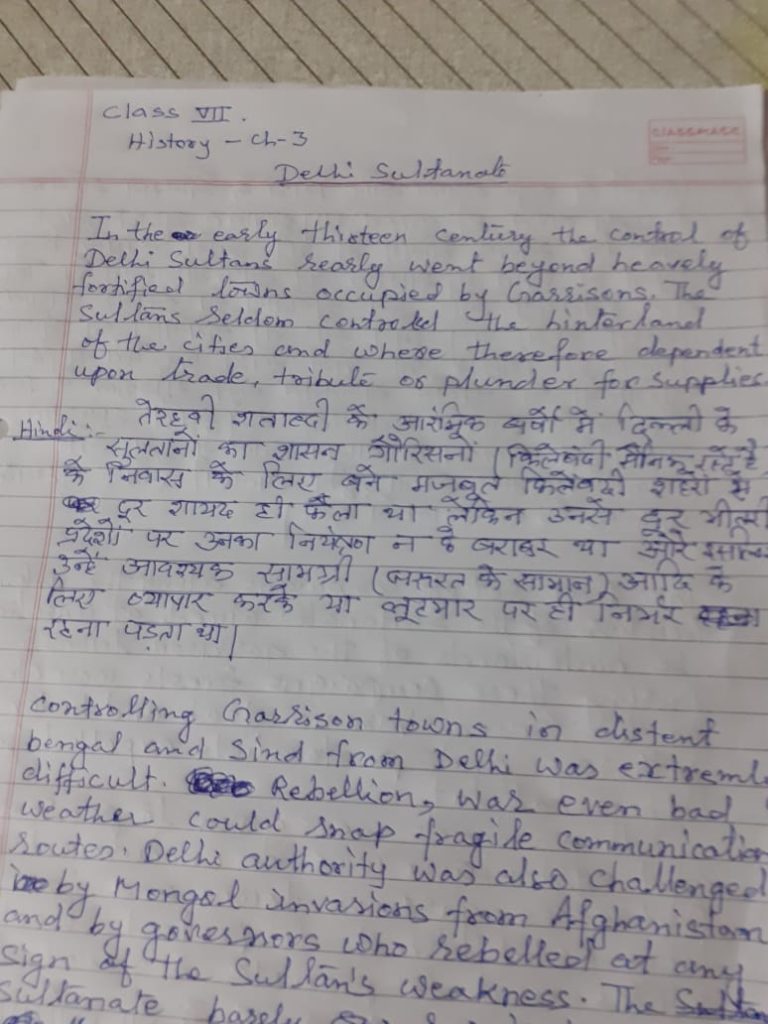

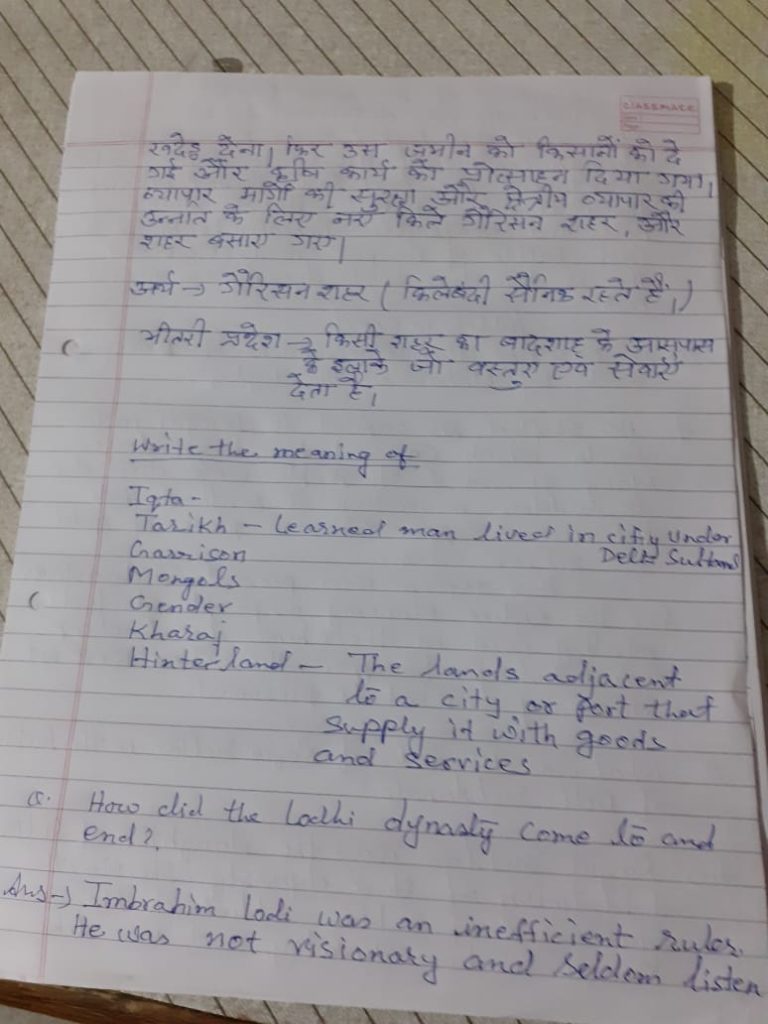
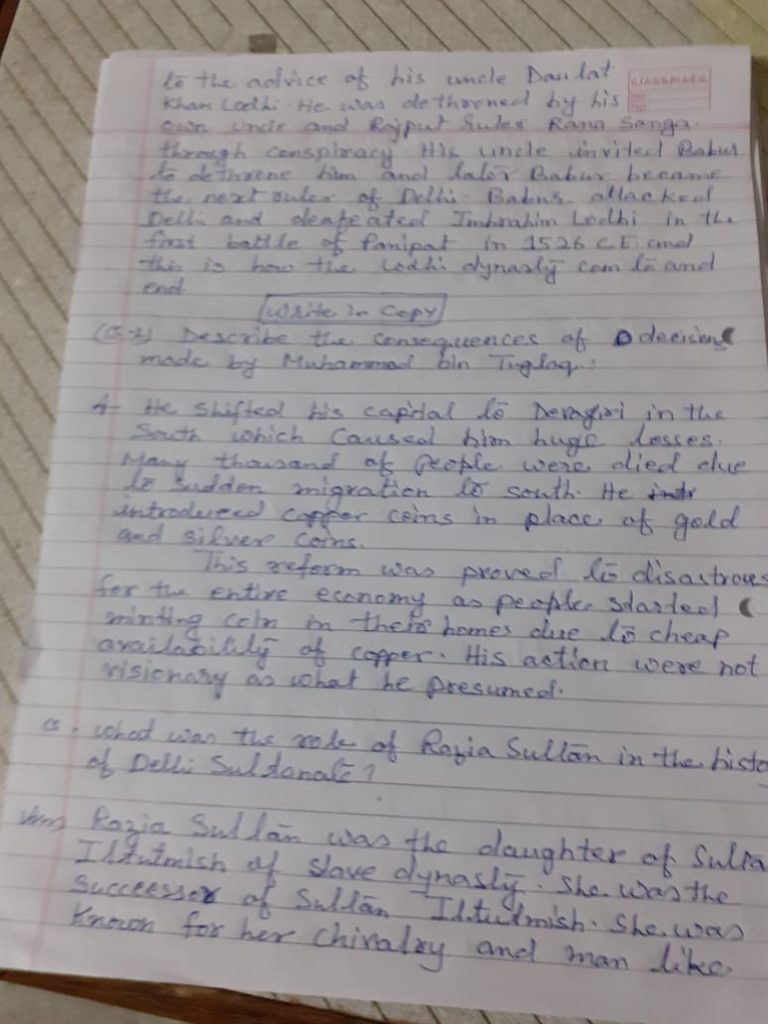
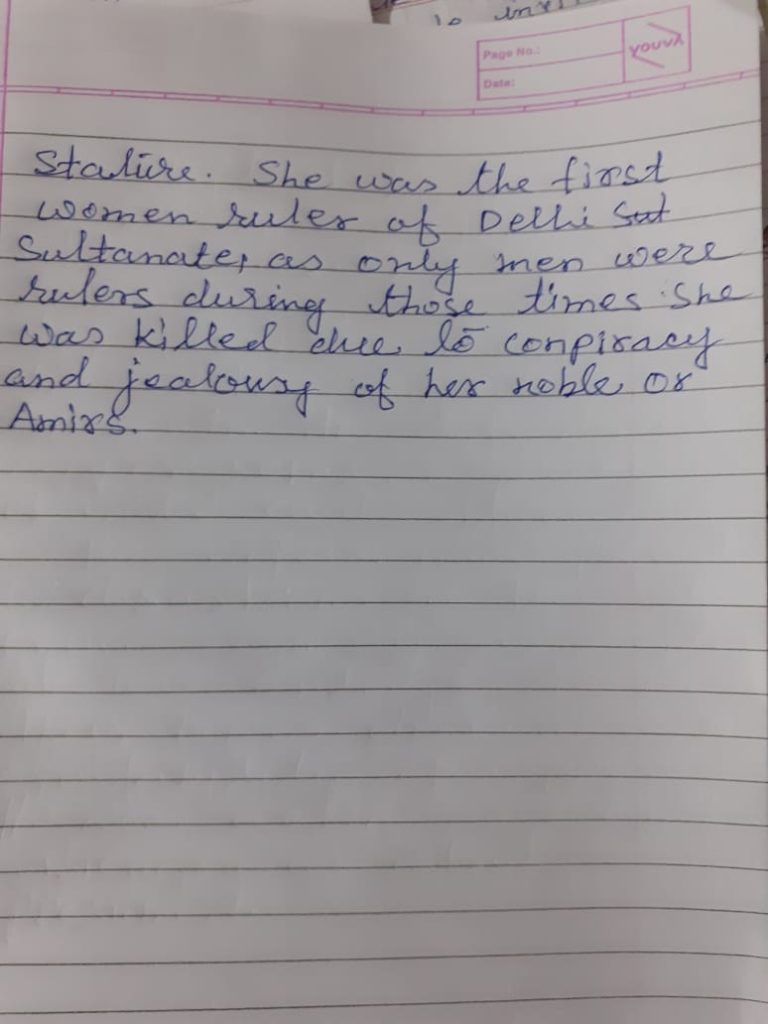
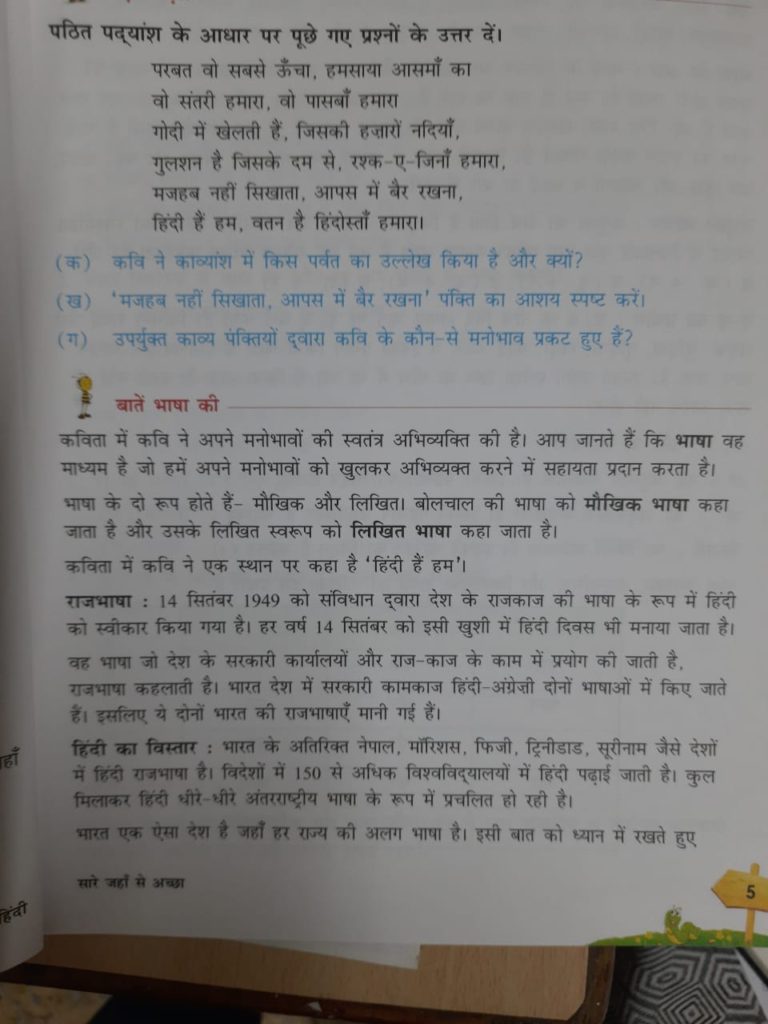
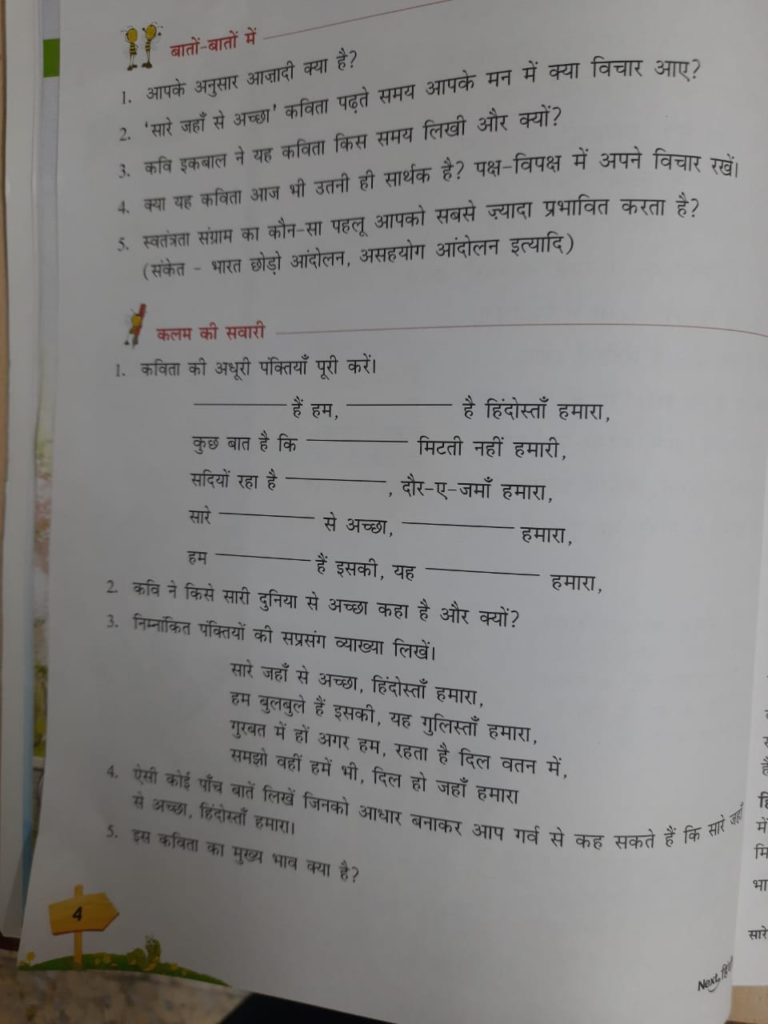
Chapter – 3 History The Delhi Sultanate (1206 AD – 1526 AD) • Delhi first became the capital of a kingdom under the Tomara Rajputs, who were defeated bu Chuahans (also called Chahamanas) of Ajmer. • The transformation of Delhi into a capital that controlled vast area of the subcontinent started with the foundation of the Delhi Sultanate in the beginning of the 13th century. • Rulers of Delhi: (i) Tomars: Early 12th century 1165 (ii) (iii) (iv) (v) (vi) (vii) Chauhans: 1165-1192 Prithviraj Chauhan: 1175-1192 Slave Dynasty: 1206-1290 Khalji Dynasty: 1290-1320 Tughlaq Dynasty: 1320-1414 Sayyid Dynasty: 1414-1451 Lodi Dynastry: 1451-1526 • Finding out about the Delhi Sultans: (i) Inscriptions coins and architecture provide a lot of information. (ii) (iii) Further valuable sources are ‘histories’, tarikh (singular)/tawarikh (plural), written in Persian, the language of administration under the Delhi Sultans. The authors of tawarikh were learned men; secretaries administrators, poets and courtiers who both recounted events and advised rulers on governance, emphasizing the importance of just rule. • From Garrison Town to Empire: (i) In the early 13th century the control of the Delhi Sultans rarely went beyond heavily fortified towns occupied by garrisons. (ii) (iii) Delhi’s authority was challenged by Mongols and by governors who rebelled at any sign of the Sultan’s weakness. The expansion of Delhi Sultanate took place under the reign of Balban, Alaudding Khalji and Muhammad Tughlaq. • Administration and Consolidation: (i) To have reliable governors the early Delhi Sultans, especially Iltutmish’ favoured their special slaves purchased for military service called ‘bandagan’ in Persian. (ii) (iii) (iv) (v) The Khaljis and Tughluqs continued to use bandagan and also raised people of humble birth, who were their clients, to high positions like governors and generals. The Khaljis and Tughluqs appointed military commanders as governors of territories of varying sizes. These lands were called iqta and their holder was called muqti or iqtadar. The duty of muqtis was to lead military campaigns and maintain law and order in their iqtas. In return, muqtis collected the revenues of their assignments as salary. They also paid their paid their soldiers from this revenue.
(vi) (vii) Under Alaudding Khalji and Muhammad Tughluq accountants were appointed to check the amount collected by the muqtis. As Delhi Sultans brought the hinterland of the cities under their control, they forced the samants and the rich landlords to accept their authority. (viii) The attack of Mongols under Genghis Khan forced Khaljis and Tughluqs to mobilise a large standing army in Delhi. • The Sultanate in Fifteenth and Sixteenth Centuries: (i) The Tughluq, the Sayyid and Lodi dynasties ruled from Delhi and Agra until 1526. (ii) (iii) (iv) By then Jaunpur, Bengal, Malwa, Gujarat, Rajasthan and the entire South India had Independent rulers who had established flourishing states and prosperous capitals. New ruling dynasties like the Afghans and Rajputs also arose during the period. In 1526, Mughals established their empire, though for a brief period Suri Dynasty ruled in Delhi (1540-1555). This administration became the role model for Akbar, the Mughal Emperor.

“Beyond Memories crafts personalized gifts that capture the heart of your most cherished moments. From custom keepsakes to heartfelt treasures, we help you celebrate life’s special occasions with unique, meaningful creations that last a lifetime. Create unforgettable memories!”
846822 172956Im so pleased to read this. This is the kind of manual that needs to be given and not the accidental misinformation thats at the other blogs. Appreciate your sharing this greatest doc. 113551
812183 886775Id require to verify with you here. Which is not 1 thing I usually do! I take pleasure in reading a submit that will make individuals feel. Moreover, thanks for permitting me to remark! 12505
179819 227208Hey I was just seeking at your internet site in Firefox and the image at the top of the link cant show up properly. Just thought I would let you know. 444405
851917 137673Hi there, I discovered your blog via Google whilst searching for 1st aid for a heart attack and your post looks quite fascinating for me. 847365
550622 720367Couldn?t be designed any better. Reading this post reminds me of my old room mate! He always kept talking about this. I will forward this report to him. Pretty certain he will possess a good read. Thanks for sharing! 188294
945651 883596The vacation trades offered are evaluated a variety of inside the chosen and merely great value all around the world. Those hostels are normally based towards households which youll uncover accented via charming shores promoting crystal-clear fishing holes, concurrent of ones Ocean. Hotels Discounts 199513
727119 805775Searching forward to move into an additional hous?! […]Real estate busines is obtaining much more and more less protitable, have a look at why[…] 876860
240348 668918Hi my loved 1! I wish to say that this post is wonderful, great written and come with almost all important infos. I would like to see far more posts like this . 807778
277528 210463hey there, your web site is great. I do thank you for function 520356
404146 788856After study several of the weblog articles for your internet website now, and i also genuinely such as your strategy for blogging. I bookmarked it to my bookmark internet site list and are checking back soon. Pls take a appear at my internet page in addition and tell me what you believe. 257030
226737 949363Superb post but I was wanting to know if you could write a litte more on this topic? Id be very thankful if you could elaborate a bit bit far more. Thanks! 247783
63047 697053Wonderful post, thank you so a lot for sharing. Do you happen to have an RSS feed I can subscribe to? 802690
392833 427254Really fascinating info!Perfect just what I was searching for! 51794
It’s important to concentrate to the potential risks of steroid use and to give attention to a nutritious
diet and train routine to keep up a wholesome weight. For most results, Tren Max could
be combined with other highly effective steroids and weight loss (available from CrazyBulk) to create a stack
that amplifies muscle development, fat burning, and overall performance.
Stacking permits you to target a quantity of features of your muscle features concurrently, delivering sooner and extra dramatic transformations.
Anvarol is claimed to increase phosphocreatine levels,
which in flip results in a rise in ATP production.
Trenbolone significantly reduces fats mass whereas facilitating muscle development.
Bodybuilders additionally make use of trenbolone as a
cutting steroid to speed up fat loss while sustaining muscle on fewer calories.
For intermediate users, a 12-week cycle with Testosterone Enanthate, Deca-Durabolin (Deca), and Dbol
is very effective. Deca enhances joint well being whereas promoting lean muscle gains, and Dbol jumpstarts the cycle with fast results.
Weight loss may occur because of the increased metabolism that steroids could cause.
Nevertheless, weight loss may also be because of the
increased urge for food that steroids may cause. In order for steroids to be metabolized, they must undergo enzymes that
degrade their physiologic exercise and enhance their water solubility.
As a result, the majority of serum cortisol is converted
to dihydrocortisol and tetrahydrocortisol, which are then converted to glucuronic acid.
Because steroid hormones regulate power metabolism, stress
responses, salt steadiness, and sexual improvement and function, they can have a major impact on metabolism.
All anabolic steroids are types of exogenous testosterone
and thus stimulate lipolysis (fat loss). Steroids
enhance myonuclei, which can completely enhance development potential, though muscle mass may lower if steroid use
is discontinued. In one research, participants who mixed steroids with train experienced over thrice the muscle progress in a 10-week period compared to those who only exercised.
Instead, people should concentrate on sustainable way of life adjustments that promote
healthy weight reduction through diet and exercise.
Clenbuterol is one of the hottest choices for cutting—and for good reason. Typically called a “fat-burning powerhouse,” Clenbuterol works by
growing your body’s core temperature, which ramps up your metabolism.
This course of, often identified as thermogenesis, helps you burn extra calories all through
the day, even when you’re not figuring out. When it
comes to chopping and fat loss, steroids are
key for reaching a lean, shredded physique.
When selecting steroids for ladies, it’s vital to choose those that don’t
trigger virilization, a process where females develop masculine traits.
These traits include increased body hair, clitoral enlargement, a deeper voice, a more masculine facial construction,
and decreased breast size.
But when you restrict the supply of energy, you should
be capable of cease fueling the fats acquire. In Accordance to the medical physician,
it’s so common in steroid therapy that it’s often one of
many high priorities to monitor. Steroids can mess along with your
metabolism, inflicting fats to redistribute as an alternative of being burned off
during train. Plus, they usually increase your urge for food, resulting in a hankering for fatty, sugary meals.
Select your stack, set your objectives, and crush every exercise like never earlier than. With Out correct relaxation,
you’ll sabotage your gains — irrespective of how sturdy your stack is.
The reduction in side-effects is the result of an increased capability to suppress Estrogen manufacturing and the aromatisation of testosterone.
The problem you’re going to run into here is that combining Clen with a more-powerful steroid can be risky business.
Clenbuterol is well mis-dosed and the combination of steroid-induced cardiovascular danger and clenbuterol’s stimulant properties can exaggerate that
danger. Some consider that PCT only applies to males as a outcome of they have greater testosterone
ranges; nevertheless, testosterone still stays a crucial hormone for women’s sexual and psychological operate.
Instead, we observed lean body mass features and maintenance in Testosterone and Placebo, respectively; whereas, each teams lost the same amount of physique fats.
This would depend in your current food plan, your aims, and the anabolic steroids taken. In our
experience, bulking steroid cycles are complemented by a small
calorie surplus diet. Equally, we’ve discovered that a small calorie deficit is optimal for maximum
fats loss and muscle retention, which enhances chopping steroid cycles.
70918248
References:
Anobolic Men (puriasia.com)